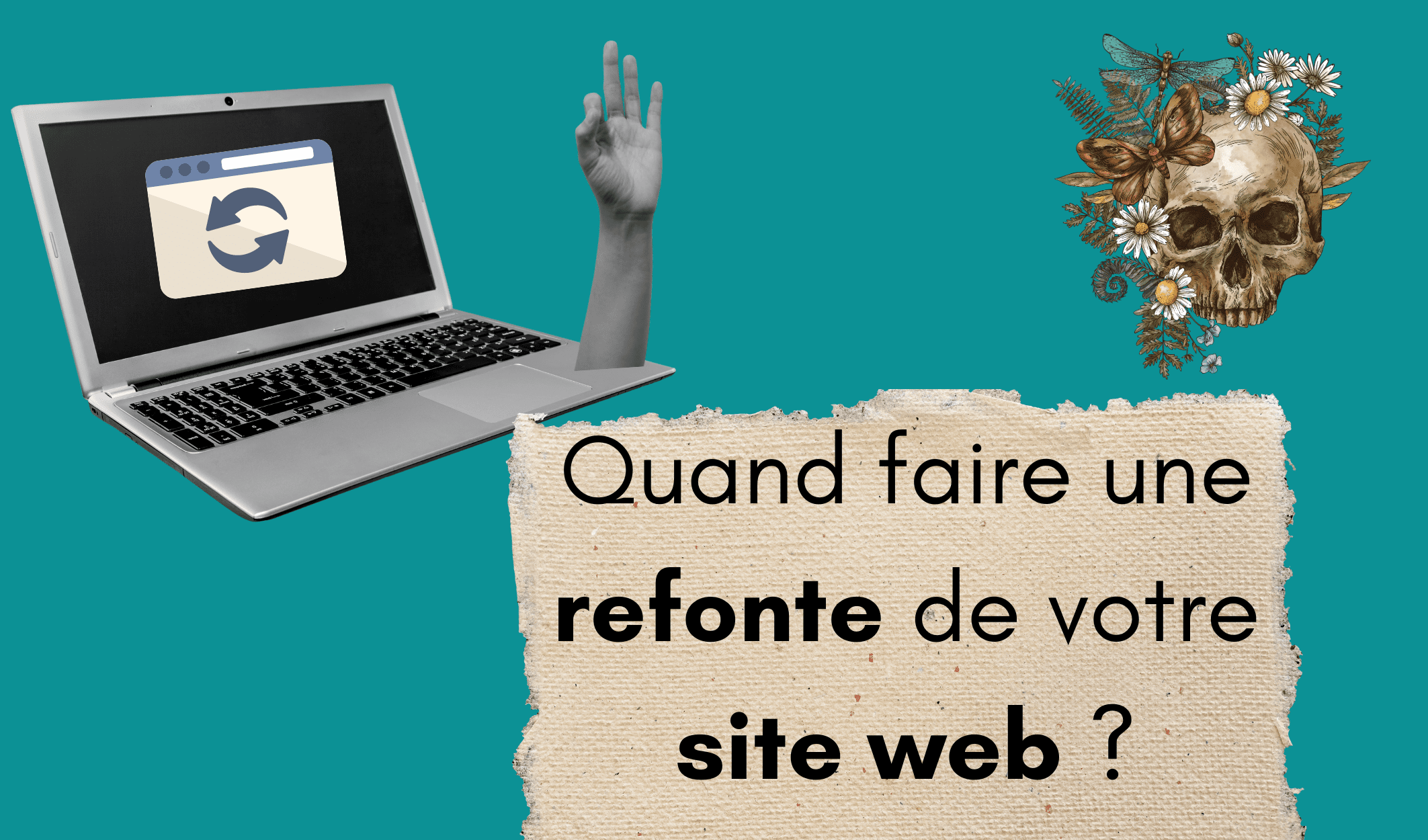Having a high-performing website is crucial for any business that wants to succeed in today's digital world. But how do you know when it's time to redesign your website? I'll give you several tips to help you make that decision.
From a user experience point of view
Evolution of user needs
Your prospects’ expectations and needs are changing all the time. If your website no longer meets their needs, you need to think about a redesign. If your visitors find your site too complicated, or not intuitive enough, they may leave quickly. Your website must evolve with its users to remain relevant.
An obsolete design
A dated design can give a bad impression. Visitors may think that your site is no longer updated, and wonder if your business is still relevant. This may be a factor in redesigning!
Before the redesign:

After the redesign:

Listen to user feedback
User feedback is a goldmine: their comments and suggestions show you what works and what needs improvement. With this feedback, you can assess whether a redesign is needed or not.
From a marketing and business point of view
Monitor your KPIs
Your key performance indicators (KPIs) are your best allies in understanding how your site is doing. If conversion rates are down, you have a high bounce rate, or session durations are low, it’s a sign that a redesign might be in order. You should regularly analyze this data to make decisions accordingly.

Your brand image
Your website is often the first impression your visitors have of your business. It must therefore reflect your brand image in a coherent way. If your site no longer corresponds to your current visual identity, it must be updated.
Natural referencing (SEO)
Make sure your content is optimized and your site follows SEO best practices to continue attracting traffic. Good SEO is not just about stuffing your pages with keywords, it is also about creating quality content, optimizing page loading speed, and ensuring a pleasant user experience. You also need to think about the structure of the site and the use of HTML tags. A redesign can help better structure your content and improve your positioning on Google.
In relation to your objectives
Your website should be aligned with your strategic goals. If your business has evolved, you are offering new products/services, targeting a new market, etc., your site should reflect all these changes. Also think ROI: a website redesign is an investment but can generate leads, increase sales and improve customer satisfaction. Weigh the costs and potential benefits to make your decision.
From a technical point of view
Beware of aging technologies or versions
Technology is evolving at a rapid pace, and what was cutting edge a few years ago can quickly become completely outdated. Keeping up to date and using newer systems helps ensure that your site works well on all devices.
At the security level
Data security is important. You need to update your security protocols to avoid cyber attacks and other risks. If you have a maintenance contract, the risk will be lower.
What about performance?
A slow website can discourage visitors: according to a study of The State of the user Experience – Limelight Networks, 60% of Internet users leave a site for a competitor when the loading time is longer than 5 seconds. Also, according to a survey commissioned by CDNetworks, 88% of French Internet users would not return to a site deemed too slow.
If your website is too slow, you should definitely consider redesigning and optimizing your website performance.
From a technical point of view
There are several factors that can motivate a redesign of your website, whether they are related to the user experience, UX, marketing performance, your strategic objectives or the technologies you use. Do not hesitate to consult a professional for an audit of your site to assess the need for a redesign.

